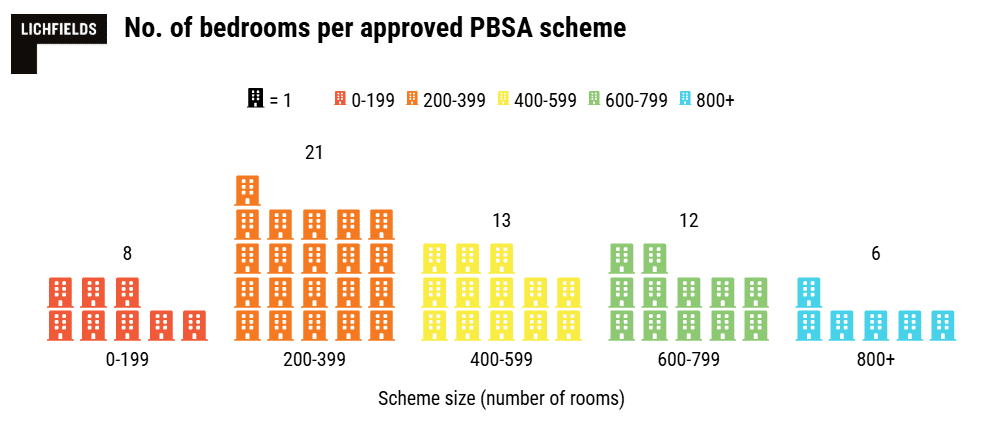
New research from Lichfields shows that, since 2021, London has approved planning for more than 26,000 student bedrooms
After years of low-delivery rates, London housing targets are looking more realistic after 2024 and Q1 2025 saw a surge in approvals.
This is in large part thanks to the Purpose Built Student Accommodation (PBSA) targets, with 26,000 student bedrooms approved since 2021, equivalent to 10,500 conventional homes.
More accommodation is incorporating affordable housing provision
The total of student bedrooms does not contribute to the affordable housing total, however, Lichfields’ research shows that more and more PBSA are incorporating affordable housing provisions.
It shows that PBSA is currently one of the strongest and most economically viable types of residential development in the current climate, and is an opportunity to ease pressure on the private rented sector as well as support the larger housing needs of the capital.
Jonathan Hoban, associate director in Lichfields’ London office, said: “Purpose-built student accommodation plays a critical role in meeting housing need and supporting London’s global education offer. The research identifies a healthy pipeline of schemes with approval which should translate into deliveries.
“Against the poor backdrop for conventional housing in London, the provision of PBSA not only ensures London remains a leading destination for higher education but it could help deliver more affordable homes. It could be a win-win situation for London.
“This is a real opportunity to bring forward the delivery of much-needed homes across the capital. By maintaining a flexible approach in the next London Plan and continuing to champion well-designed PBSA, we can ensure more schemes continue to come forward, helping to meet both student demand and the wider housing needs of London.”

London is an expensive place to build
The latest Turner & Townsend Global Construction Market Intelligence (GCMI) 2025 report showed that London is currently the fifth most expensive place to build in the world, at an average cost of £4,163 per square metre.
Furthermore, costs are expected to continue to rise by 3.5% in 2026.
Upon the report’s release, Chris Sargent, UK managing director, real estate, at Turner & Townsend, said: “The government has set out welcome, ambitious plans to renew our country’s economic growth but we know budgets are expected to remain squeezed and, in terms of construction’s capacity, we’re far from firing on all cylinders.
“Concerted efforts to improve efficiency will be crucial. There’s exciting potential, for example, for public programmes like the New Hospitals Programme, which is underpinned by Modern Methods of Construction (MMC), to drive the pace of wider modernisation across the industry, and we should grasp this opportunity with both hands.
“The government’s consideration of public-private partnerships to fuel projects like public estate decarbonisation, as announced in the Infrastructure Strategy, will also be important to bridge the funding gap and work towards Labour’s missions while balancing restricted departmental spending.
“For the industry, we now need to capitalise on the renewed clarity from government – to ensure that private investment is working hand in hand with public money and that we are delivering outcomes which will continue to build confidence in construction. This is key to enabling the development of the skills and productivity gains we need to restart the engine of growth.”
The post London housing targets given boost by student accommodation appeared first on Planning, Building & Construction Today.

